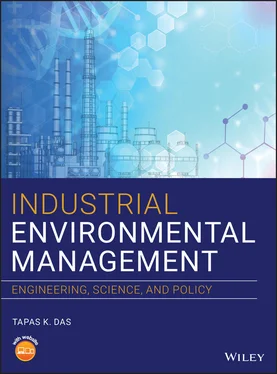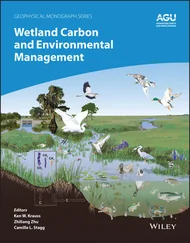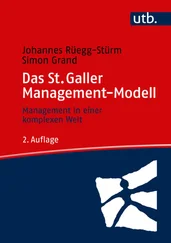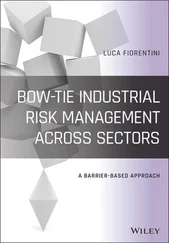To our current and future students.
Tapas K. Das, PhD, PE, BCEE, is a chemical and environmental engineer; a Fellow member of the American Institute of Engineers; Past Chair of the AIChE’s Environmental Division; former Chair of the Air Pollution Control Committee of the American Academy of Environmental Engineers and Board of Trustee with the Academy; American Academy Who’s Who in Environmental Engineering from 2002 to the present; former environmental engineer at the Washington Department of Ecology; as an adjunct faculty member, Dr. Das has been teaching several undergraduate and graduate courses in Civil, Environmental, and Mechanical Engineering programs at Saint Martin’s University School of Engineering, Washington; formerly assistant professor in the College of Natural Resources and Paper Science and Engineering at the University of Wisconsin, Stevens Point; and recipient of the Professor S. K. Sharma Medal and CHEMCON
Distinguished Speaker Award for 2007 given by the Development Organization for Sustainable Transformation (DOST), Indian Institute of Chemical Engineers. Dr. Das holds a BS in Chemical Engineering from Jadavpur University in Kolkata, India, and PhD from Bradford University, Bradford, England. Dr. Das was a postdoctoral fellow at London’s Imperial College of Science, Technology, and Medicine and a visiting scientist at Princeton University. He has wide practical and theoretical experience in various areas, including air toxics and aerosols, industrial wastewater treatment for water reuse, solid waste management and combustion, profitable process pollution prevention, reuse, recycle, redesign, sustainable engineering, and sustainability. Dr. Das is a registered professional engineer in the state of Washington. Dr. Das is the author of the book Toward Zero Discharge: Innovative Methodology and Technologies for Process Pollution Prevention (Wiley, 2005).
Recently, I taught a similar course titled “Industrial Environmental Management” to senior engineering students and found out that there isn't a single textbook available to cover the depth and breadth of this subject matter. That alone motivated me to write this textbook with real‐world examples, challenging problems, and solutions provided for each chapter.
Tomorrow's and today's sustainable products and processes require engineers to carefully consider environmental, economic, social factors, while using sustainable feedstocks, renewable energy, water, chemicals, and materials in creating their design. Some quantitative tools for incorporating sustainability concepts into engineering designs and performing metrics are highlighted in the text; sustainable engineering and its principles introduce these tools and show how to apply them in lean manufacturing. In general, engineers and managers working in manufacturing industries find valuable and up‐to‐date information about lean manufacturing, Six Sigma, workers' health and safety issues and environmental regulations, monitoring, reporting, and compliance. Also, consulting engineers will find useful information about sustainable design principles and methodology, plus best available control technologies for environmental remediation in cost‐effective ways.
This book is dedicated to undergraduate and graduate students. This book is designed to be a textbook that is prepared primarily for junior‐level and senior‐level students in multidisciplinary engineering fields including, but not limited to, aerospace, chemical, civil, environmental, industrial and manufacturing, materials science and engineering, mechanical, paper science and engineering, petroleum engineering, and business management. The subject matters covered in this textbook will be suitable for offering a course in multiple engineering disciplines within colleges and schools of engineering programs. This book has 10 chapters. I have written the text for Chapters 1 through 8for students in clear and simple language. Theories, real‐world problems, and applications are embedded throughout these first eight chapters so that students can check their understanding before continuing on to new sections. Chapters 9and 10are more suitable for a graduate‐level course in sustainable engineering, sustainable manufacturing, or related topics.
4 June 2019
Tapas K. Das
Olympia, WA, USA
This book publication wouldn't have been successful without the helping hands of many individuals. I would like to thank John Berg, Clint Bowman, Jae Chung, Meghasree Dey, Dibyendu Narayan Ghosh, Linn Hergert, Clint Lamoreaux, Joseph Mailhot, Robert Peters, Katherine Porter, Selma Thagard, Sandra Tully, and staff members at the Timberland Regional Library in the City of Lacey, Washington, who helped to prepare the manuscript, proofread the text, provided reference materials, figures, graphics for the book, and made the book more readable for students. Also, I want to acknowledge my teachers, professors, and my classmates in India, my doctoral and postdoctoral advisors, mentors, and colleagues in England and United States for their encouragement, noble efforts, dedication and integrity to their professions, and exemplary lifestyle.
Finally, I would like to express my sincere appreciation to Bob Esposito, Associate Publisher at Wiley for accepting the idea of this textbook; Beryl Mesiadhas, Senior Project Editor; Devi Ignasi, Production Editor; Michael Leventhal; and the entire editorial and publishing team at Wiley.
About the Companion Website
This book is accompanied by a companion website:

www.wiley.com/go/Das/IEM_1e
1 Why Industrial Environmental Management?
1.1 Introduction
This introductory chapter addresses why industrial environmental management is important! Environmental management is a very crucial part of human well‐being that needs to be deeply considered. Formulated design seeks to steer the development process to take advantage of opportunities, avoid hazards, mitigate problems, and prepare people for unavoidable difficulties by improving adaptability and resilience. It is a process concerned with human–environment interactions, and seeks to identify: what is environmentally desirable; what are physical, economic, social, and technological constraints to achieving that process; and what are the most feasible options. Actually there can be no concise universal definition of environmental management; however, it can be briefly summarized as supporting sustainable development; demanding multidisciplinary and interdisciplinary or even holistic approaches; it should integrate and reconcile different development viewpoints, co‐ordinate science, engineering, technology, social, policy making and planning; state proactive processes; timescales and concerns ranging from local to global issues; and one stresses stewardship rather than exploitation while dealing with a world affected by humans.
In other perspectives, environmental management can be explained as methods of ways when dealing with issues due to the importance of the need to improve environmental stewardship by integrating ecology, policy making, planning, and social development. The goals include sustaining and (if possible) improving existing resources; preventing and overcoming environmental problems; establishing limits; founding and nurturing institutions that effectively support environmental research, monitoring and management resources; warning of threats and identifying positive change opportunities; (where possible) improving quality of life; and finally, identifying new technology or policies that are useful. And moreover, actually environmental management may be subdivided into a number of fields, including the following:
Читать дальше













